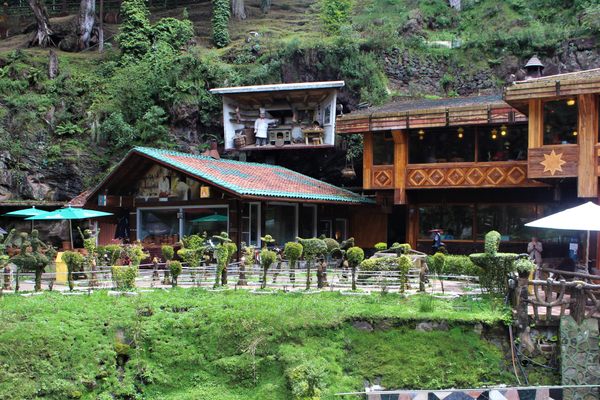Centro Ceremonial Otomí
This ceremonial Mexican square looks as though it belongs in a science fiction movie.
Just outside the municipal seat is the Centro Ceremonial Otomí or Otomi Ceremonial Center. This center is the result of efforts to create a recognized space to preserve and promote the Otomi culture.
These efforts were begun in 1977 on the part of Otomi elders and some local ejidos. The foundation was formally established in 1980 and construction of the monumental facility began in 1988. The site and organization aim to recreate Otomi ceremonies of centuries past even though the written and archeological evidence as to what they were like is scarce. On the second Sunday of each month, a ritual is performed here to honor the elements of earth, air, fire, and water as well as to supplicate to the gods with offerings. This ritual is headed by the members of the Otomi Supreme Council.
The complex is constructed on a mountain called Cerro La Catedral. At the entrance of the center, there is a sculpture of a warrior of the Botzanga Otomi who fought against the Aztec emperor Axayacatl. The first plaza is called the Plaza del Coloso (Plaza of the Colossus), and is named after a giant figure of Tahaay, the lord messenger of fire and life. At the back is a mural of Da-mishi, the jaguar that walks and talks, by Luis de Aragón. Ascending the hill is the Glorieta del Centinela (Roundabout of the Sentinel) to which indications of the four cardinal directions meet. Next is the Plaza del Sagitario, the main courtyard, which is surrounded by 45 enormous sculptures acting as guards. On this plaza as well is the Assembly Hall, with its iconic seven columns. These total 52, the number of years on the Aztec calendar. This building houses the Otomi Supreme Council and the seven columns are thought to be associated with the seven musical notes, the seven colors of the rainbow, and the seven days of the week.
At the most elevated spot are 12 silos or cones, each representing a generation of Otomis, and on each is a sculpture of Tata Jiade, the Sun. While the construction is meant to reflect Otomi culture before the 9th century and Nahua influence, this latter influence is acknowledged by an image of Quetzalcoatl. The Otomi Ceremonial Center has a small teaching museum with a permanent exhibition of artifacts, history of the Otomi people, and the past and present crafts. This museum is called the Nguu Ro Ya Hnhnu or Museum of the Otomi Culture.
The complex is located on an ecological reserve called the Otomi-Mexico State Park. This park extends over 50 hectares, most of which is covered in pine, oyamel, and holm oak forest. This part of the ceremonial center has camping and hiking facilities. The complex is also notable for appearing in the 1989 James Bond film License to Kill.
Community Contributors
Added by
Edited by
The Atlas Obscura Podcast is Back!





















Follow us on Twitter to get the latest on the world's hidden wonders.
Like us on Facebook to get the latest on the world's hidden wonders.
Follow us on Twitter Like us on Facebook